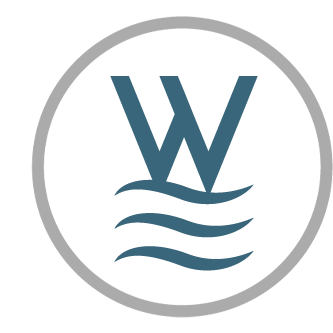the artist:
Dave Maxwell in his shop
Dave Maxwell, an engineer by education and profession and Seabeck, WA resident by choice, brings an analytical, minimalist style and high quality materials to his woodwork. A career in the Navy centered on operations at sea and research and development program management followed by a second career at NASA supporting space flight instrument transportation and logistics taught him that good enough is never good enough. As his Chiaroscuro brand name suggests, Dave accepts as normal and desirable that light’s interplay with shadow adds depth and cause appearances to change with the seasons, the days and even minute by minute.
As it would be for any engineer, the design of each piece begins as a response to a need. Form always follows function and each element adds something important to its usefulness. As one person said of a tall serving table made of Ponderosa pine, “I can see its bones.” At the same time, making utility a top priority doesn’t mean that appearance takes a back seat, particularly when it comes to shape. Whether it’s a piece of furniture or a serving platter, shapes, materials and finishes are selected to serve not only the purpose and appearance of the piece, but also to enhance texture and feel under the hand. The thoughtful addition of a curve or angle, choice of materials, or incorporation of negative space can transform what necessity inspires to a joy to see and hold; turn something ordinary into something special.
If you had to put a name to Dave’s style, it would be a combination of Shaker and colonial New Mexican with a dash of contemporary Northwest. Traditional design proved over time is important for durability; principles as basic as keeping as much of the piece as possible under compressive forces. Local materials almost always respond best to local needs. The wood itself, often as not, will proclaim where it fits best. Each piece has a story even if it’s a story that only makes sense to Dave. In the end, the design and materials are allowed to speak for themselves because, in the end, they will, anyway.
“Originality for its own sake is not really the issue. Utility, economy, durability and a strong sense of place and tradition – plus a little humor - are.”
more about these products…
paring knife for scale reference
There is wisdom in the saying, “form follows function,” and all my work starts from there. That is, all my work starts from outside myself and, in the end, must be ready to stand on its own in the face of whatever necessity called it out. At the same time, if what I make is to be more than something purely utilitarian, the form needs to speak to me regardless of what function has to be achieved. With my series of cutting boards, it’s been a challenge to thread that path between the end user’s utilitarian rock of Scylla, against which they must stand, and my own aesthetic whirlpool of Charybdis that tempts the addition of weak and useless frills. After all, functional doesn’t need to mean ugly, but pleasing still needs to be useful.
• They’re large enough to do the job, but not so big that they can’t be kept out.
• The use of solid, hard woods, maple for the larger areas, not only improves their appearance but also means that they can be refinished if age and use take their toll.
• Edges are gently rounded so they’re pleasant to touch – and easy to pick up - but flat enough to provide stability.
• A plain, rectangular shape would serve, but where possible I’ve responded to the grain of the wood and my own inexplicable preferences.
• The finger holes are bigger than they need to be and rounded so they’re convenient and comfortable to use.
• A polymerized linseed oil and beeswax finish is both food safe and deeply penetrates the wood to reveal its beauty.
• Do they really need a laminate stripe of contrasting wood? Not really, but even a cutting board needs a little drama.
• An optional stand keeps them up and out of the way, but visible.
• Usually, a word pops unbidden into my head when they’re completed. When that happens, I share it on the tag.
(clockwise from lower right)
Seabeck Suite: This mix of all local woods, big leaf maple, madrone and alder, has an unpretentious shape and muted laminate stripe – just like the place where it comes from.
City Mouse and Country Mouse: It’s a playful shape and, with the finger hole at the top, it really does remind me of a mouse. The Country Mouse uses more rustic woods for the laminate stripe; oak and two species of walnut. The City Mouse gets a helping of bling with cherry, bubinga and a high contrast dash of maple.
Sentinel: To me, it’s an arresting shape and I used it again for Heart of Darkness and Game Warden. More utilitarian than the others. The understated stripe says, “stop.”









